Related Research Articles
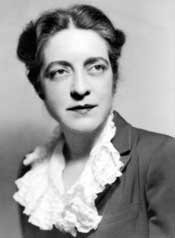
Melba Newell Phillips was an American physicist and pioneer science educator. One of the first doctoral students of J. Robert Oppenheimer at the University of California, Berkeley, Phillips completed her Ph.D. in 1933, a time when few women could pursue careers in science. In 1935 Oppenheimer and Phillips published their description of the Oppenheimer–Phillips process, an early contribution to nuclear physics that explained the behavior of accelerated nuclei of radioactive hydrogen atoms. Phillips was also known for refusing to cooperate with a U.S. Senate judiciary subcommittee's investigation on internal security during the McCarthy era that led to her dismissal from her professorship at Brooklyn College, where she was a professor of science from 1938 until 1952.
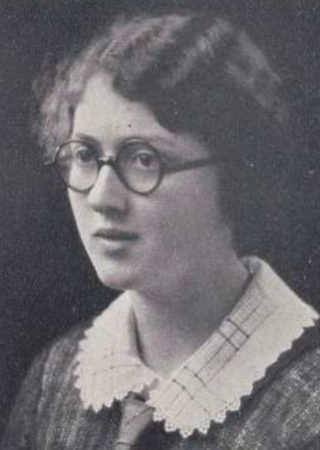
Lucy Weston Pickett was a Mary Lyon Professor and Camille and Henry Dreyfus Chair in Chemistry at Mount Holyoke College.
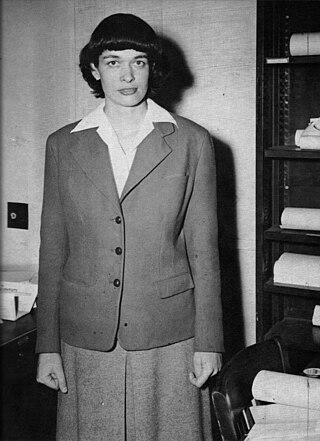
Leona Harriet Woods, later known as Leona Woods Marshall and Leona Woods Marshall Libby, was an American physicist who helped build the first nuclear reactor and the first atomic bomb.

Helen Cecilia De Silver Abbott Michael was an American chemist and a pioneer in phytochemistry. She documented the relationship between chemical composition and plant morphology and proposed a chemical taxonomy for plants. She was the first woman to lecture to students at the Philadelphia College of Pharmacy. She published several scientific papers and gave lectures to the American Association for the Advancement of Science meeting, the Franklin Institute, the Academy of Natural Sciences and the Smithsonian Institution. She received a medical degree from Tufts University School of Medicine and transformed her house in Boston into a free hospital for the poor, however she died from influenza contracted from one of her patients. She was married to organic chemist Arthur Michael.
Miriam Rafailovich is an American materials engineering researcher. She is the director of the Garcia Materials Research Science and Engineering Center at Stony Brook University as well as former co-director of the Chemical and Molecular Engineering program at Stony Brook University. Her publications focus mainly on nanoscale materials engineering, including nanofibers, supercritical carbon dioxide, and biodegradable polymers.

Alvin Cushman Graves was an American nuclear physicist who served at the Manhattan Project's Metallurgical Laboratory and the Los Alamos Laboratory during World War II. After the war, he became the head of J (Test) Division at Los Alamos, and was director or assistant director of numerous nuclear weapons tests during the 1940s and 1950s. Graves was badly injured in the 1946 laboratory criticality accident in Los Alamos that killed Louis Slotin, but recovered.
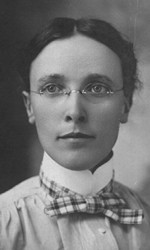
Mary Frances Winston Newson was an American mathematician. She became the first female American to receive a PhD in mathematics from a European university, namely the University of Göttingen in Germany. She was also the first person to translate Hilbert's problems into English.

Fay Ajzenberg-Selove was an American nuclear physicist. She was known for her experimental work in nuclear spectroscopy of light elements, and for her annual reviews of the energy levels of light atomic nuclei. She was a recipient of the 2007 National Medal of Science.
Joan B. Berkowitz was an American chemist. Her areas of research have included materials for the space program, reusable molds for spacecraft construction built from molybdenum disilicides and tungsten disilicides, and the disposal and treatment of hazardous wastes. She was the first woman to serve as president of The Electrochemical Society.
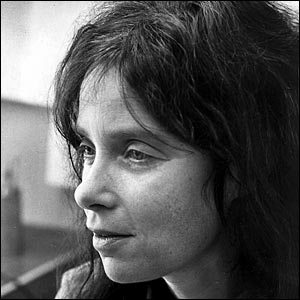
Renate Wiener Chasman was a physicist.

Myrtle Claire Bachelder was an American chemist and Women's Army Corps officer, who is noted for her secret work on the Manhattan Project atomic bomb program, and for the development of techniques in the chemistry of metals.

Katharine "Kay" Way was an American physicist best known for her work on the Nuclear Data Project. During World War II, she worked for the Manhattan Project at the Metallurgical Laboratory in Chicago. She became an adjunct professor at Duke University in 1968.
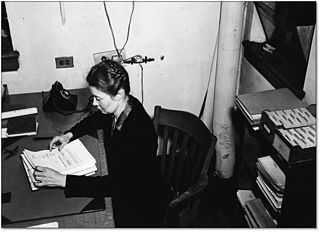
Hoylande Denune Young Failey was an American chemist. During World War II she worked at the Manhattan Project's Metallurgical Laboratory. After the war she became the first woman to be appointed as a division head at the Argonne National Laboratory, and the first woman to chair the Chicago Section of the American Chemical Society.

Pauline Gracia Beery Mack was an American chemist, home economist, and college administrator. Her research in calcium, nutrition, radiation, and bone density began during the 1930s, and culminated in work for NASA when she was in her seventies.
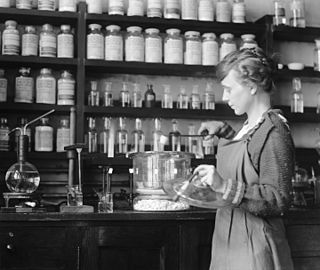
Margaret Dorothy Foster was an American chemist. She worked for the United States Geological Survey, and was recruited to work on the Manhattan Project. She wrote dozens of research papers on the chemistry of the natural world and assaying methods.

Elizabeth Rona was a Hungarian nuclear chemist, known for her work with radioactive isotopes. After developing an enhanced method of preparing polonium samples, she was recognized internationally as the leading expert in isotope separation and polonium preparation. Between 1914 and 1918, during her postdoctoral study with George de Hevesy, she developed a theory that the velocity of diffusion depended on the mass of the nuclides. As only a few atomic elements had been identified, her confirmation of the existence of "Uranium-Y" was a major contribution to nuclear chemistry. She was awarded the Haitinger Prize by the Austrian Academy of Sciences in 1933.

Jane Hamilton Hall was an American physicist. During World War II she worked on the Manhattan Project. After the war she remained at the Los Alamos National Laboratory, where she oversaw the construction and start up of the Clementine nuclear reactor. She became assistant director of the laboratory in 1958. She was secretary of the General Advisory Committee of the Atomic Energy Commission from 1956 until 1959, and was a member of the committee from 1966 to 1972.
Elizabeth Amy Kreiser Weisburger was an American chemist who made significant contributions in medicine and chemistry, specifically chemical carcinogenesis. She worked for nearly 40 years at the National Cancer Institute and received multiple awards for her work. Weisburger's research in chemical carcinogenesis was necessary in order to find treatments for cancer. Some of Weisburger's work included studying carcinogenesis, looking at the activity of carcinogens, and determining the dangers of chemotherapy drugs. Elizabeth Weisburger is considered a pioneer in chemical carcinogenesis.
Mary Beth Stearns is an American solid-state physicist known for her work on magnetism.
References
- 1 2 3 4 5 6 7 8 9 Elizabeth H. Oakes (2007). Encyclopedia of World Scientists. Infobase Publishing. pp. 327–328. ISBN 978-1-4381-1882-6 . Retrieved April 19, 2014.
- 1 2 3 4 5 6 7 8 9 10 11 12 13 14 Louise S. Grinstein; Rose K. Rose; Miriam H. Rafailovich, eds. (1993). Women in Chemistry and Physics . Greenwood Press. pp. 243–246. ISBN 0-313-27382-0.
- ↑ Tina Garrett (May 9, 1992). "Caroline Herzenberg – Class of 1953" (PDF). Interviews of the Margaret MacVicar Memorial AMITA Oral History Project. Massachusetts Institute of Technology. Retrieved April 19, 2014.
- 1 2 3 4 5 Barbara Hutmacher MacLean (1997). I can't do what? Voices of Pathfinding Women. Pathfinder Publishing. ISBN 0-934793-62-X.
- ↑ American Men & Women of Science 17th Edition Volume 3. R.R. Bowker. 1989. p. 682.
- ↑ Emily J. McMurray; Jane Kelly Kosek; Roger M. Valade III (1995). Notable Twentieth-century Scientists . Gale Research. ISBN 0-8103-9181-3.
- ↑ American Men & Women of Science, 17th edition, Vol. 3. R.R. Bowker. 1989. p. 682.
- ↑ American Men & Women of Science, 17th edition, Vol. 3. R.R. Bowker. 1989. p. 682.
- ↑ Louise S. Grinstein; Rose K. Rose; Miriam H. Rafailovich, eds. (1993). Women in Chemistry and Physics. Greenwood Press. p. 248. ISBN 0-313-27382-0.
- ↑ Martha J. Bailey (1998). American Women in Science 1950 to the Present. ABC-CLIO. p. 170. ISBN 0-87436-921-5.
- ↑ Tiffany K. Wayne (2011). American Women of Science since 1900 Vol. I. ABC-CLIO. p. 506. ISBN 978-1-59884-158-9.
- ↑ "Women's Hall Of Fame Welcomes 12 Inductees". Chicago Tribune. 1989. Retrieved 2014-05-22.
- ↑ "Honorary Degrees Awarded". State University of New York Plattsburgh. 1996. Retrieved 2014-05-04.[ permanent dead link ]
- ↑ "APS Fellowship". American Physical Society. 1989. p. 4.
- ↑ Martha J. Bailey (1998). American Women in Science. Abc-Clio Incorporated. p. 169. ISBN 0-87436-921-5 . Retrieved April 19, 2014.
- 1 2 University of California (April 30, 1997). "Caroline Stuart Littlejohn Herzenberg". Contributions of 20th Century Women to Physics. Retrieved April 19, 2014.
- ↑ Tiffany K. Wayne (2011). American Women of Science since 1900 Volume I. ABC-CLIO. p. 505. ISBN 978-1-59884-158-9.
- ↑ Who's Who in Science and Engineering 5th Edition. Marquis Who's Who. 1999. p. 556.
- ↑ Herzenberg, Caroline L. (1996). Ethical Issues in Physics: Ethical Harassment. Ethics in Science and Engineering National Clearinghouse.
- ↑ "'Camera on Science' Show to be Weekly". Freeport Journal-Standard. 1974-10-15.
- ↑ Louise S. Grinstein; Rose K. Rose; Miriam H. Rafailovich, eds. (1993). Women in Chemistry and Physics. Greenwood Press. p. 248. ISBN 0-313-27382-0.
- ↑ C. G. Weeramantry (2000). Nuclear Weapons and Scientific Responsibility. Springer. p. 199. ISBN 90-411-1289-8.
- ↑ "8th Day Center for Justice". 8th Day Center for Justice. 2014. Retrieved 2014-05-21.
- ↑ "PEN PALS Profiles of Tribune letter writers: Caroline Herzenberg". The Tribune Company. 2011. Retrieved 2014-05-27.